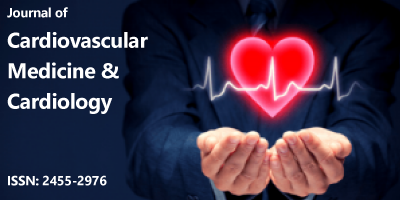Cardio-diabetology: New subspecialty and collaborative work to defeat the burden of deadly duo
Main Article Content
Abstract
Cardiovascular disease (CVD) is one of the most global threatened diseases; particularly coronary artery disease (CAD) is a major deadly attack around the world. Diabetes mellitus (DM) is associated with a 2 to 4-fold increased mortality risk from heart disease. Diabetes related microvascular complication is seemed to be a hazardous factor for cardiovascular system and likely to cause coronary arteries disease, hypertension, peripheral arteries, and carotid vessels, especially seen in the type 2 DM populations. The severity of cardiovascular complications are related to prolong hyperglycemia and the control of dysglycemia. Thus, effective glycemic control is one of the imperative aspects of the management for the prevention of CVD in diabetes. In addition, different kinds of antidiabetes agents have different mechanism of actions that has impacted to cardiovascular outcome. The benefit and risk of current anti-diabetic agents are needed to define clearly and that is needed to promote effective clinical care between cardiology and diabetology. There are multiple complications and sequelae of diabetes that requires the involvement of cardiologic expertise in the diabetes care setting in heart disease population. Therefore, the close cooperation between the cardiologist and the diabetologist is new perceptive way of care to defeat diabetes related cardiovascular complications.
Downloads
Article Details
Copyright (c) 2018 Tun HN

This work is licensed under a Creative Commons Attribution 4.0 International License.
Mathers CD, Loncar D (2006) Plos medicine, Projections of global mortality and burden of disease from 2002 to 2030. 3: e442. Link: https://goo.gl/b7vDaX
Sarwar N, Gao P, Seshasai SR, Gobin R, Kaptoge S (2010) Di Angelantonio et al Diabetes mellitus, fasting blood glucose concentration, and risk of vascular disease: a collaborative meta-analysis of 102 prospective studies. Emerging Risk Factors Collaboration. Lancet 26: 2215-2222. Link: https://goo.gl/YrXMHz
Beckman JA, Creager MA, Libby P (2002) Diabetes and atherosclerosis: epidemiology, pathophysiology, and management. JAMA 287: 2570–2581. Link: https://goo.gl/QErUQ1
Creager MA, Luscher TF, Cosentino F, Beckman JA (2003) Diabetes and vascular disease. Pathophysiology, clinical consequences and medical therapy, Circulation 108: 1527-1532. Link: https://goo.gl/2SXTsj
Deedwania P, Kosiborod M, Barrett E (2008) Hyperglycemia and acute coronary syndrome : a scientific statement from American Heart Association Diabetes Committee of the Council on Nutrition, Physical Activity , and Metabolism, Circulation 117: 1610-1619. Link: https://goo.gl/678uY2
Wannamethee SG, Shaper G, Whincup P (2011) Impact of diabetes on cardiovascular disease. Risk and all-cause mortality in older men. Ach Intern Med 176: 404-410. Link: https://goo.gl/Lnu72J
Ray KK, Seshasai SR, Wijesuriya S, Sivakumaran R, Nethercott S, et al. (2009) Effect of intensive control of glucose on cardiovascular outcomes and death in patients with diabetes mellitus: a meta-analysis of randomised controlled trials. Lancet 373: 1765-1772. Link: https://goo.gl/iS5Df9
Kumar R, Kerins DM, Walther T (2016) Cardiovascular safety of anti-diabetic drugs ,European Heart Journal - Cardiovascular Pharmacotherapy 2: 32-43. Link: https://goo.gl/SAqMnw
Action to Control Cardiovascular Risk in Diabetes Study Group, Gerstein HC, Miller ME, Byington RP, Goff DC Jr, Bigger JT, et al. (2008) Effects of intensive glucose lowering in type 2 diabetes. N Engl J Med 358: 2545-2559. Link: https://goo.gl/gRKU7H
Yki-Jarvinen H (2004) Thiazolidinediones. Engl J Med 351: 1106-1118. Link: https://goo.gl/4F9c1h
Udell JA, Cavender MA, Bhatt DL, Chatterjee S, Farkouh ME, et al. (2015) Glucose-lowering drugs or strategies and cardiovascular outcomes in patients with or at risk for type 2 diabetes: a meta-analysis of randomised controlled trials Lancet Diabetes Endocrinol 3: 356-366. Link: https://goo.gl/tVo79H
MacDonald MR, Petrie MC, Varyani F, Ostergren J, Michelson EL, et al. (2008) CHARM Investigators. Impact of diabetes on outcomes in patients with low and preserved ejection fraction heart failure: an analysis of the Candesartan in Heart failure: Assessment of Reduction in Mortality and morbidity (CHARM) programme. Eur Heart 29: 1377-1385. Link: https://goo.gl/KQSqoh
Tun HN, Mazhar Quresh MW, Yambao EO (2018) “Metformin: A Novel Drug and Helper for Heart Failure with Type 2 Diabetes”. EC Cardiology 5: 871-878. Link: https://goo.gl/xSqtyJ
James Xu, Rajaratnam R (2017) Cardiovascular safety of non-insulin pharmacotherapy for type Cardiovascular Diabetology 16: 18. Link: https://goo.gl/PpxVmi
Wackers F, Young L, Inzucchi S (2004) Detection of silent myocardial ischemia in asymptomatic diabetic subjects. Diabetes Care 27: 1954-1961. Link: https://goo.gl/hGb7X9
Guanghong Jia, Michael A, Hill, James R (2018) Sowers Diabetic Cardiomyopathy, Circulation Research 122: 624-638. Link: https://goo.gl/vRjjzA
Miller T, Redberg R, Wackers F (2006) Screening asymptomatic diabetes patients for coronary artery disease. KJ Am Coll Cardiol 48: 761-476. Link: https://goo.gl/PyLV81





